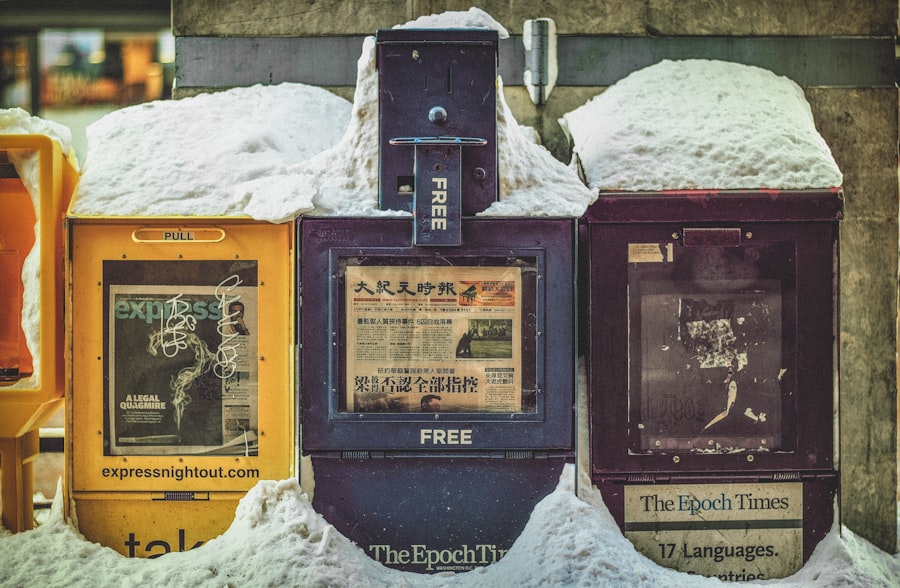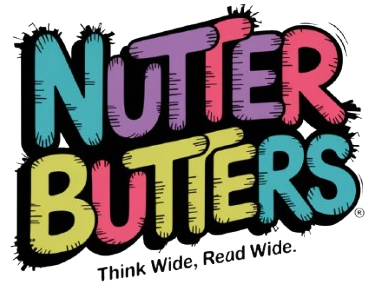
Free Newspaper: A Valuable Resource for Education
Free newspapers have emerged as a significant component of the media landscape, providing accessible information to a diverse audience. Unlike traditional newspapers that rely on subscriptions and advertising revenue, free newspapers are distributed at no cost, often funded through advertisements or sponsorships. This model has allowed them to flourish in urban areas, where they can be found in public spaces such as transit stations, cafes, and community centers.
The rise of digital media has further expanded the reach of free newspapers, with many now offering online versions that can be accessed from anywhere with an internet connection. The role of free newspapers extends beyond mere information dissemination; they serve as a vital resource for education. By providing current news and diverse perspectives, these publications can enhance learning experiences for students of all ages.
As society increasingly emphasizes the importance of media literacy, free newspapers stand out as a practical resource for teaching students how to navigate the complexities of information in the modern world.
Key Takeaways
- Free newspapers are a valuable resource for educators and students, providing access to current events and real-world applications.
- Incorporating free newspapers into the classroom can help develop critical thinking skills and improve literacy and language development.
- Accessing free newspapers online and in print allows for easy integration into lesson plans and assignments.
- Free newspapers offer a cost-effective way to stay informed about current events and provide real-world examples for classroom discussions.
- The value of free newspapers for education lies in their ability to engage students, promote critical thinking, and enhance language development.
Benefits of Free Newspapers for Education
Free newspapers offer numerous benefits for educational settings, particularly in promoting awareness of current events and fostering a sense of community among students. One of the most significant advantages is their ability to provide up-to-date information on local, national, and international issues without any financial barriers. This accessibility ensures that students from various socioeconomic backgrounds can engage with the news, fostering a more informed and active citizenry.
By reading about current events, students can develop a deeper understanding of the world around them, which is essential for their growth as informed individuals. Moreover, free newspapers often cover a wide range of topics, including politics, culture, science, and technology. This diversity allows educators to tailor lessons to students’ interests and needs, making learning more relevant and engaging.
For instance, a teacher might use articles about environmental issues to spark discussions about sustainability or employ stories about local events to encourage students to explore their community. By integrating free newspapers into the curriculum, educators can create a dynamic learning environment that encourages curiosity and critical engagement with the world.
Incorporating Free Newspapers into the Classroom

Incorporating free newspapers into the classroom can take many forms, from structured lesson plans to informal discussions. One effective approach is to create a dedicated reading time where students can browse through various articles and share their thoughts with peers.
Teachers can facilitate discussions by posing open-ended questions related to the articles, prompting students to think critically about the content and its implications. Another method for integrating free newspapers into the classroom is through project-based learning. Educators can assign students to research specific topics covered in the newspaper and present their findings to the class.
This approach allows students to delve deeper into subjects that interest them while honing their research and presentation skills. Additionally, teachers can encourage students to write their own articles or opinion pieces based on current events, fostering creativity and enhancing writing skills. By actively engaging with the content of free newspapers, students can develop a more profound understanding of journalism and its role in society.
Developing Critical Thinking Skills with Free Newspapers
| Metrics | Data |
|---|---|
| Number of Free Newspapers Used | 10 |
| Number of Students Engaged | 100 |
| Duration of Program | 6 weeks |
| Improvement in Critical Thinking Skills | 25% |
Critical thinking is an essential skill for students in today’s information-rich environment, and free newspapers provide an excellent platform for cultivating this ability. By analyzing news articles, students learn to evaluate sources, discern bias, and identify underlying assumptions in reporting. For example, when reading an article about a political event, students can be encouraged to consider the author’s perspective and how it may influence the portrayal of facts.
This analytical approach helps students become more discerning consumers of information. Furthermore, discussions around controversial topics presented in free newspapers can stimulate critical thinking by challenging students to consider multiple viewpoints. Teachers can guide students in exploring different sides of an issue, encouraging them to back up their opinions with evidence from the articles or other credible sources.
This practice not only enhances critical thinking but also fosters empathy and understanding of diverse perspectives. As students engage with complex issues through free newspapers, they develop the skills necessary to navigate an increasingly polarized world.
Using Free Newspapers for Current Events and Real-World Application
Free newspapers serve as an excellent resource for teaching current events and connecting classroom learning to real-world applications. By regularly incorporating news articles into lessons, educators can help students understand how academic concepts manifest in everyday life. For instance, a lesson on economics could be enriched by discussing recent articles about market trends or local businesses.
This connection between theory and practice not only enhances student engagement but also reinforces the relevance of their studies. Additionally, free newspapers can be used to foster civic engagement among students. By reading about local government decisions or community initiatives, students can gain insight into how civic processes work and the importance of participation in democracy.
Educators can encourage students to attend local government meetings or participate in community service projects related to issues highlighted in the newspaper. This hands-on approach empowers students to take an active role in their communities while reinforcing the lessons learned in the classroom.
Free Newspapers as a Tool for Literacy and Language Development

Enhancing Literacy and Language Development
The use of free newspapers in educational settings can significantly enhance literacy and language development among students. Exposure to diverse writing styles and vocabulary found in news articles helps improve reading comprehension skills. As students encounter various genres—such as opinion pieces, feature stories, and investigative reports—they become more adept at understanding different forms of writing and their purposes.
Benefits for English Language Learners
This exposure is particularly beneficial for English language learners who may struggle with traditional textbooks but find relatable content in free newspapers. Moreover, free newspapers provide opportunities for vocabulary enrichment through contextual learning. When students come across unfamiliar words while reading articles, they can engage in discussions about their meanings based on context clues or look them up together as a class.
Fostering a Love for Language
This collaborative approach not only builds vocabulary but also fosters a love for language as students discover new ways to express themselves through writing and speaking. By integrating free newspapers into literacy instruction, educators can create a rich language-learning environment that supports all learners.
Accessing Free Newspapers Online and in Print
Accessing free newspapers has never been easier due to the proliferation of digital platforms alongside traditional print distribution methods. Many cities have dedicated websites where residents can read local news articles online at no cost. These digital versions often include interactive features such as comment sections or social media sharing options that encourage reader engagement.
Additionally, mobile applications allow users to receive notifications about breaking news or trending stories, making it convenient for students to stay informed. In print form, free newspapers are typically available at various public locations such as libraries, schools, coffee shops, and public transportation hubs. This widespread distribution ensures that individuals from all walks of life have access to current events without financial constraints.
Educators can take advantage of this accessibility by organizing field trips to local libraries or community centers where students can pick up copies of free newspapers. By familiarizing students with both print and digital formats, teachers prepare them for a media landscape that increasingly relies on diverse platforms for information consumption.
The Value of Free Newspapers for Education
The integration of free newspapers into educational settings offers numerous advantages that extend beyond mere access to information. They serve as powerful tools for fostering critical thinking skills, enhancing literacy development, and connecting classroom learning with real-world applications. By providing diverse perspectives on current events and encouraging civic engagement, free newspapers empower students to become informed citizens who actively participate in their communities.
As educators continue to seek innovative ways to engage students in meaningful learning experiences, free newspapers stand out as a versatile resource that meets various educational needs. Whether through structured lessons or informal discussions, these publications offer rich content that stimulates curiosity and promotes lifelong learning. In an era where media literacy is paramount, embracing free newspapers as educational tools is not just beneficial; it is essential for preparing students to navigate an increasingly complex world.
FAQs
What is newspaper in education (NIE)?
Newspaper in education (NIE) is a program that provides newspapers to schools for educational purposes. It aims to improve literacy, critical thinking, and civic engagement among students.
How can schools get free newspapers for education?
Schools can often get free newspapers for education through partnerships with local newspapers, educational grants, or NIE programs offered by newspapers.
What are the benefits of using newspapers in education?
Using newspapers in education can help students improve their reading and comprehension skills, stay informed about current events, and develop critical thinking and media literacy skills.
What types of educational resources do newspapers provide for schools?
Newspapers often provide educational resources such as lesson plans, activities, and worksheets that are aligned with curriculum standards and designed to help teachers integrate current events and news literacy into their lessons.
Are there any restrictions on using free newspapers in education?
Schools that receive free newspapers for education may be required to adhere to certain usage guidelines, such as using the newspapers for educational purposes only and not for commercial gain.



